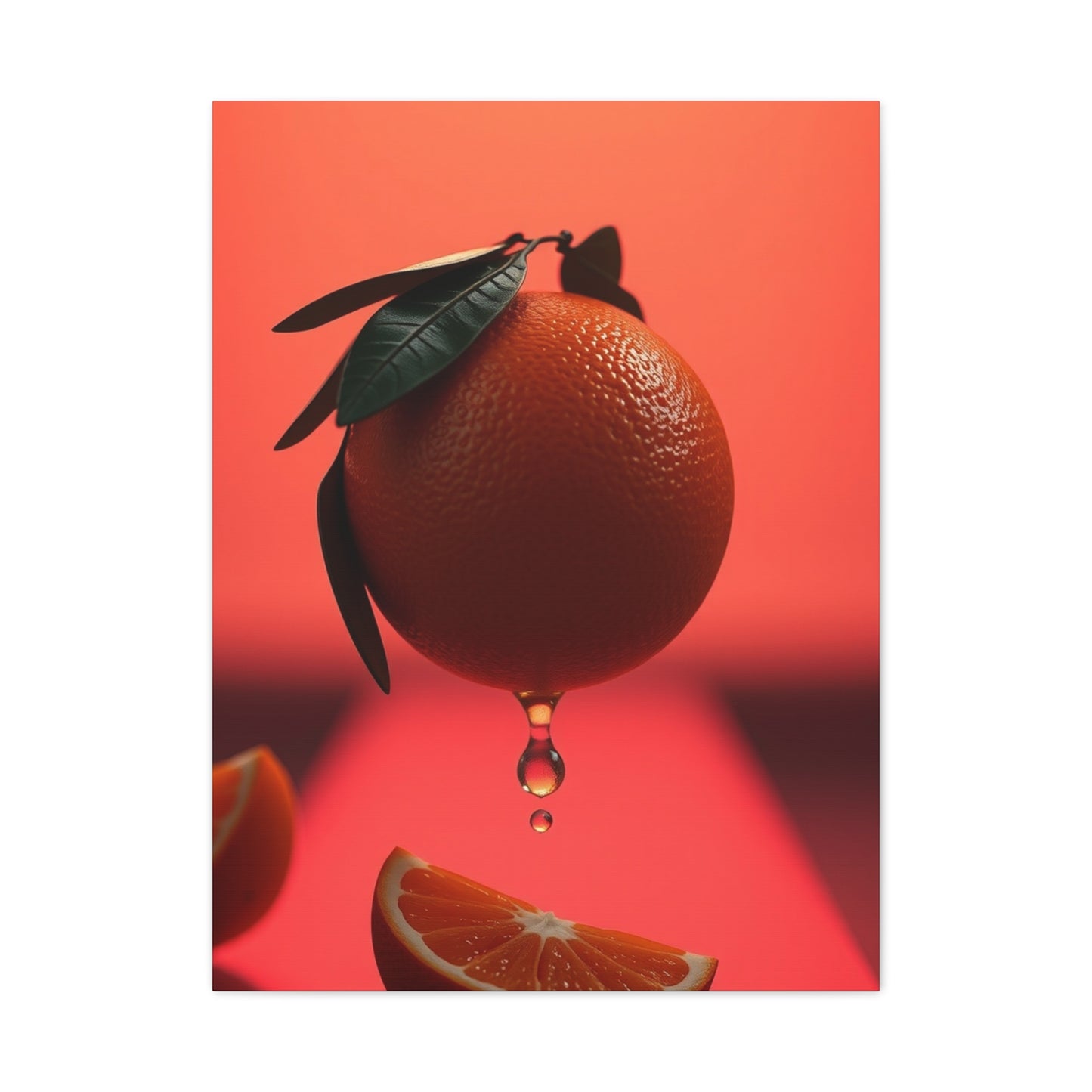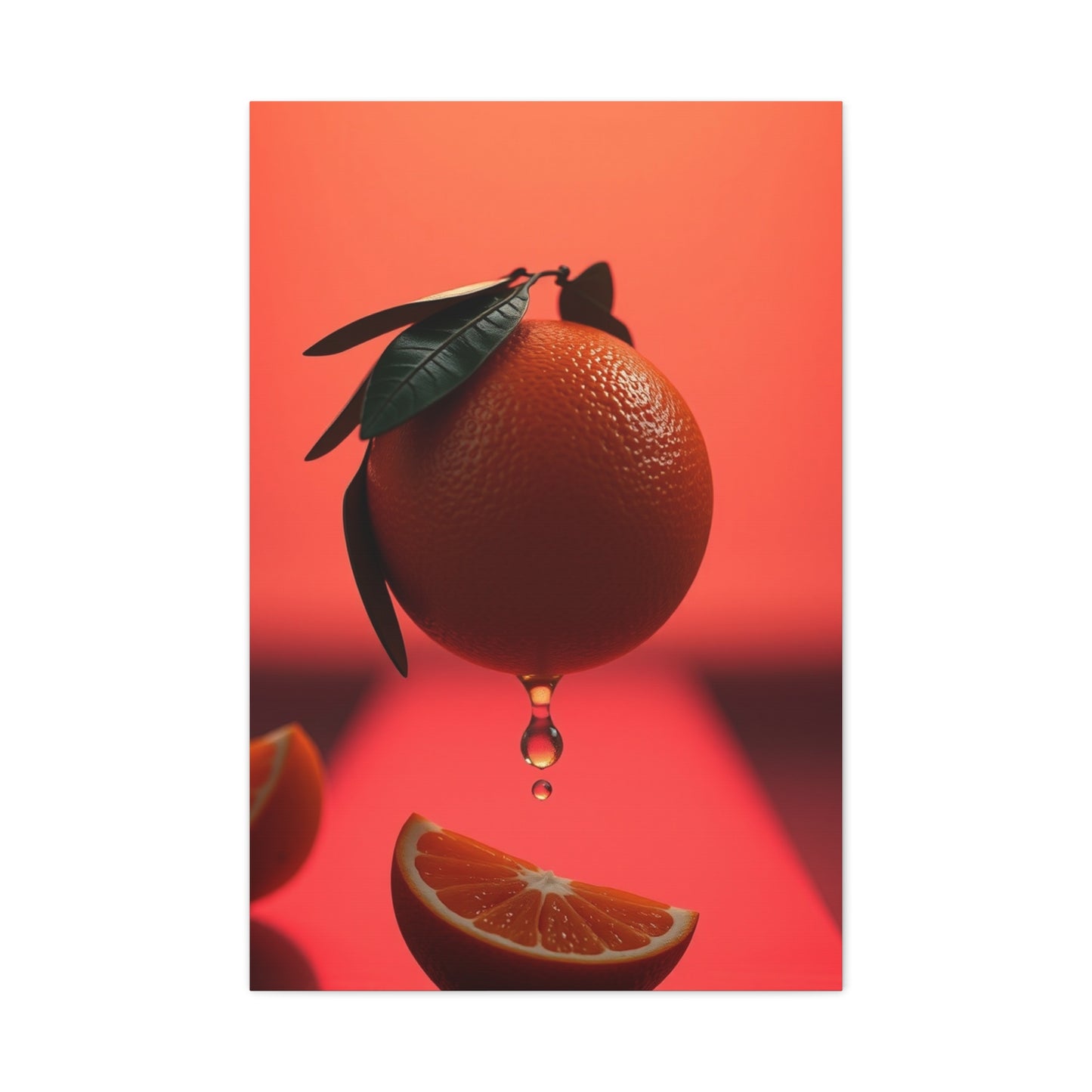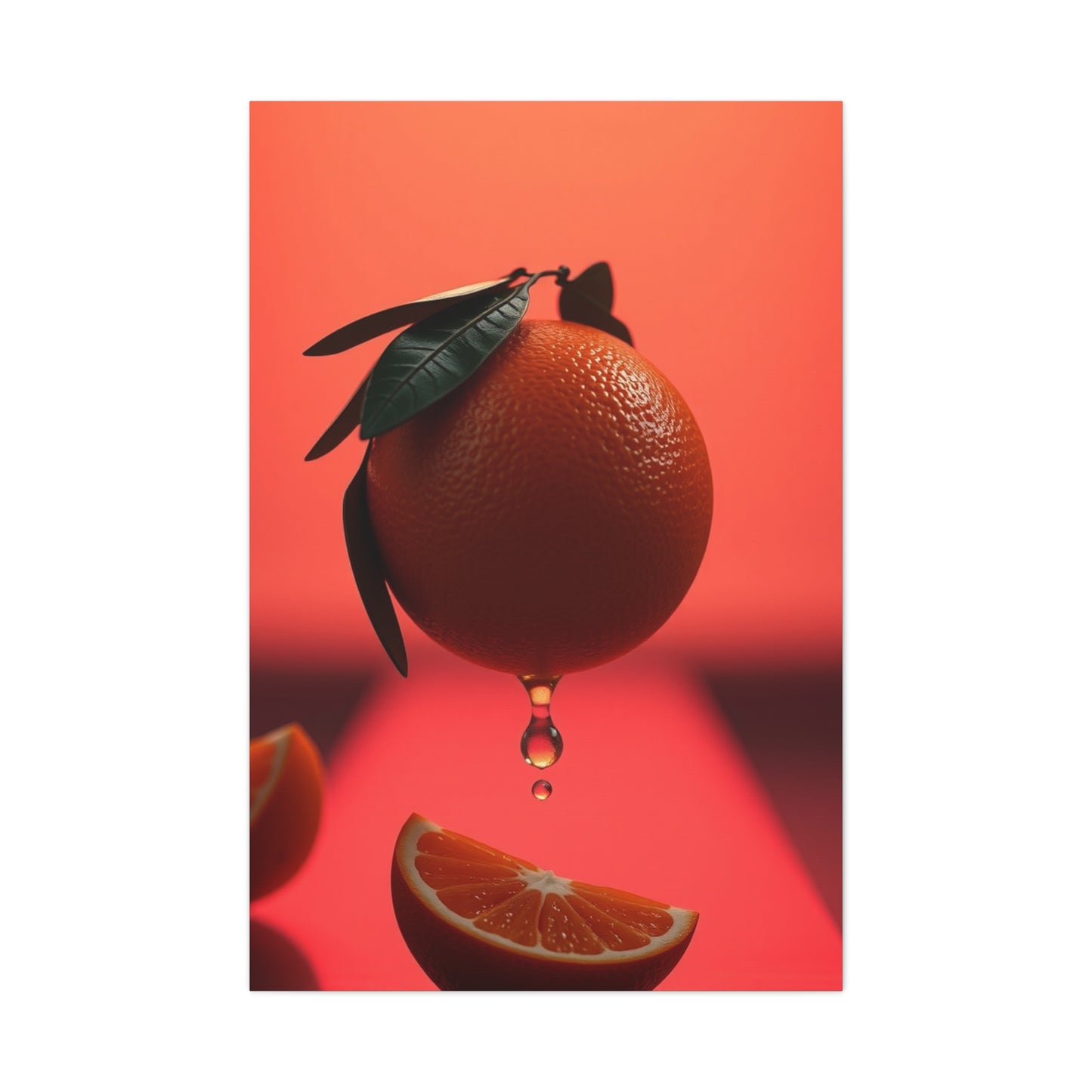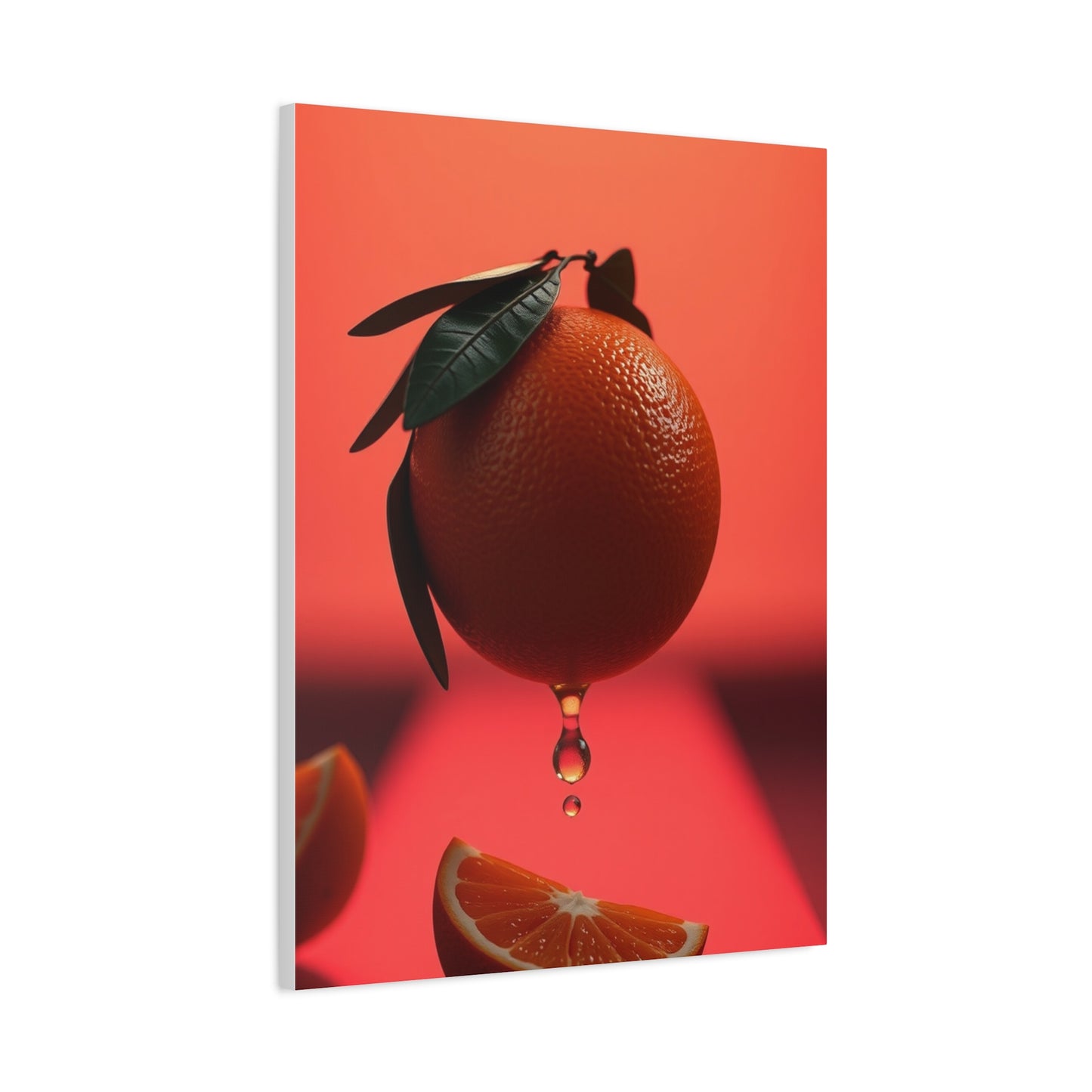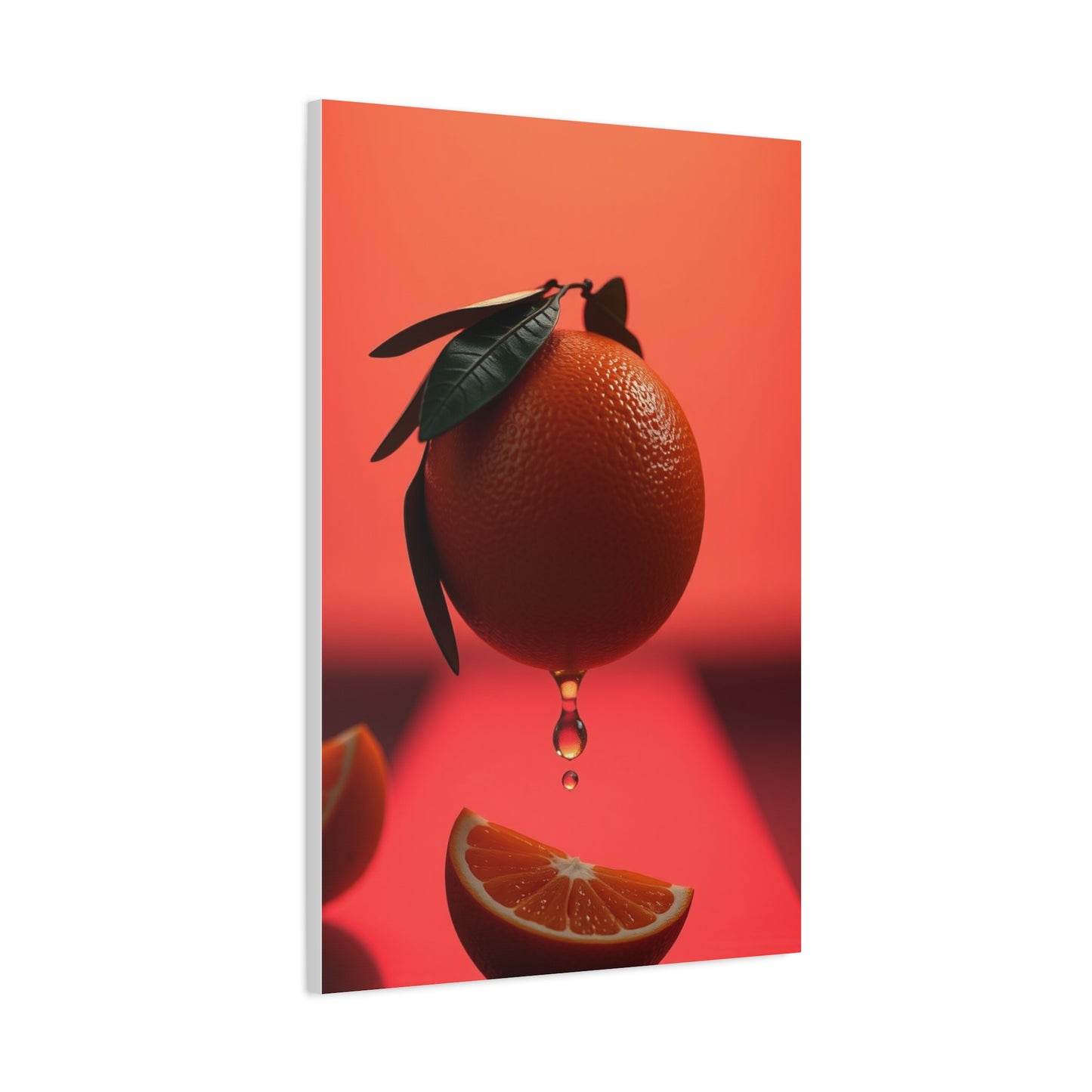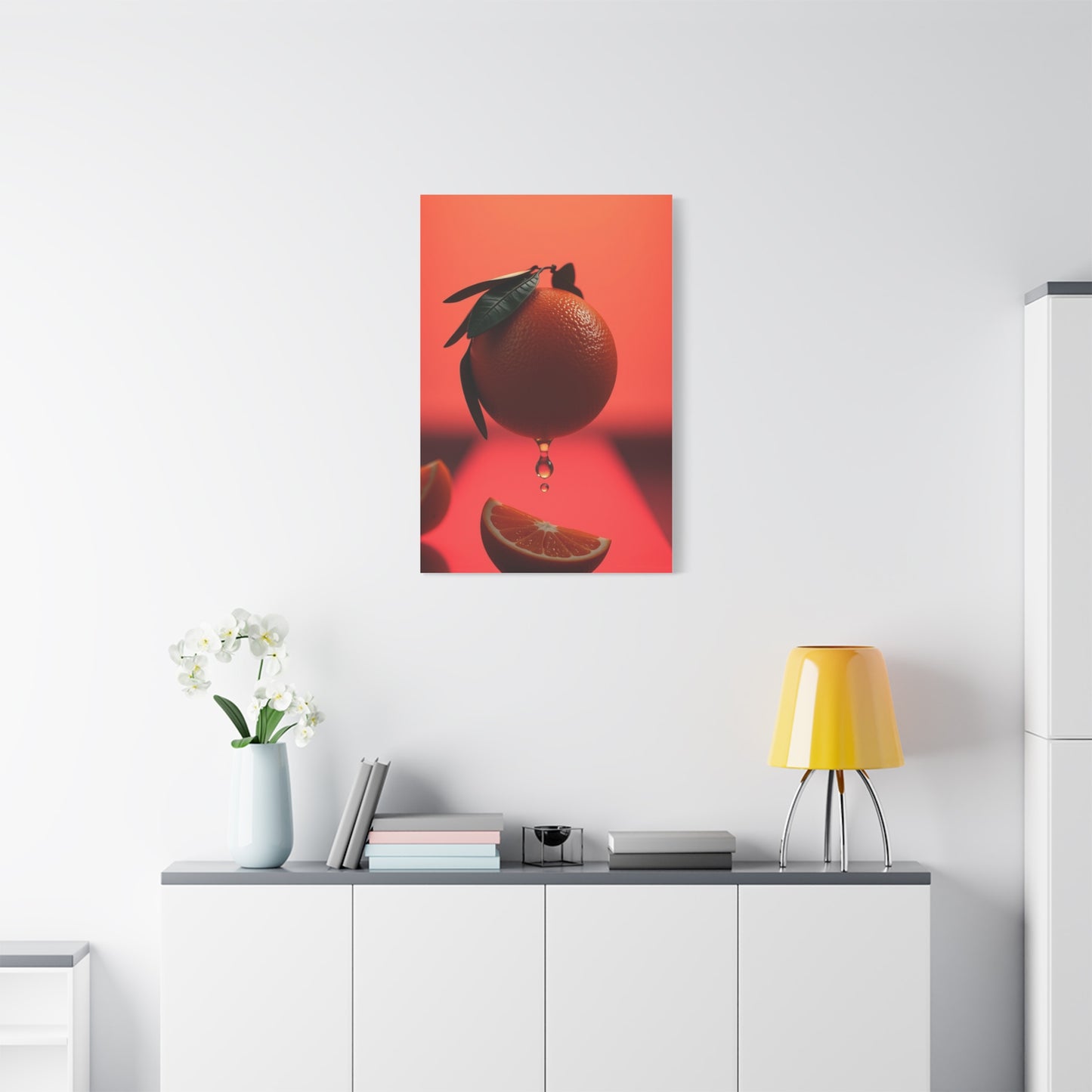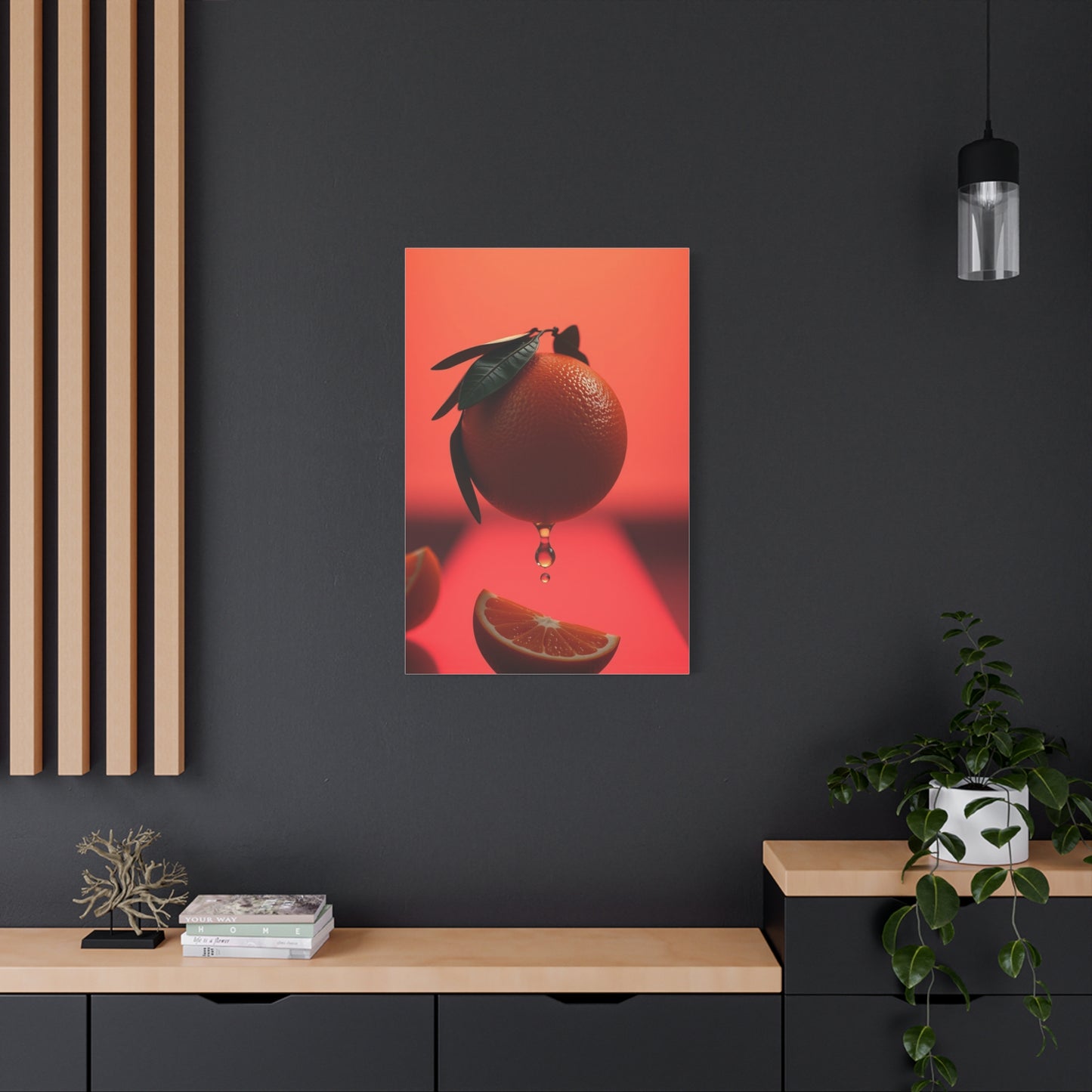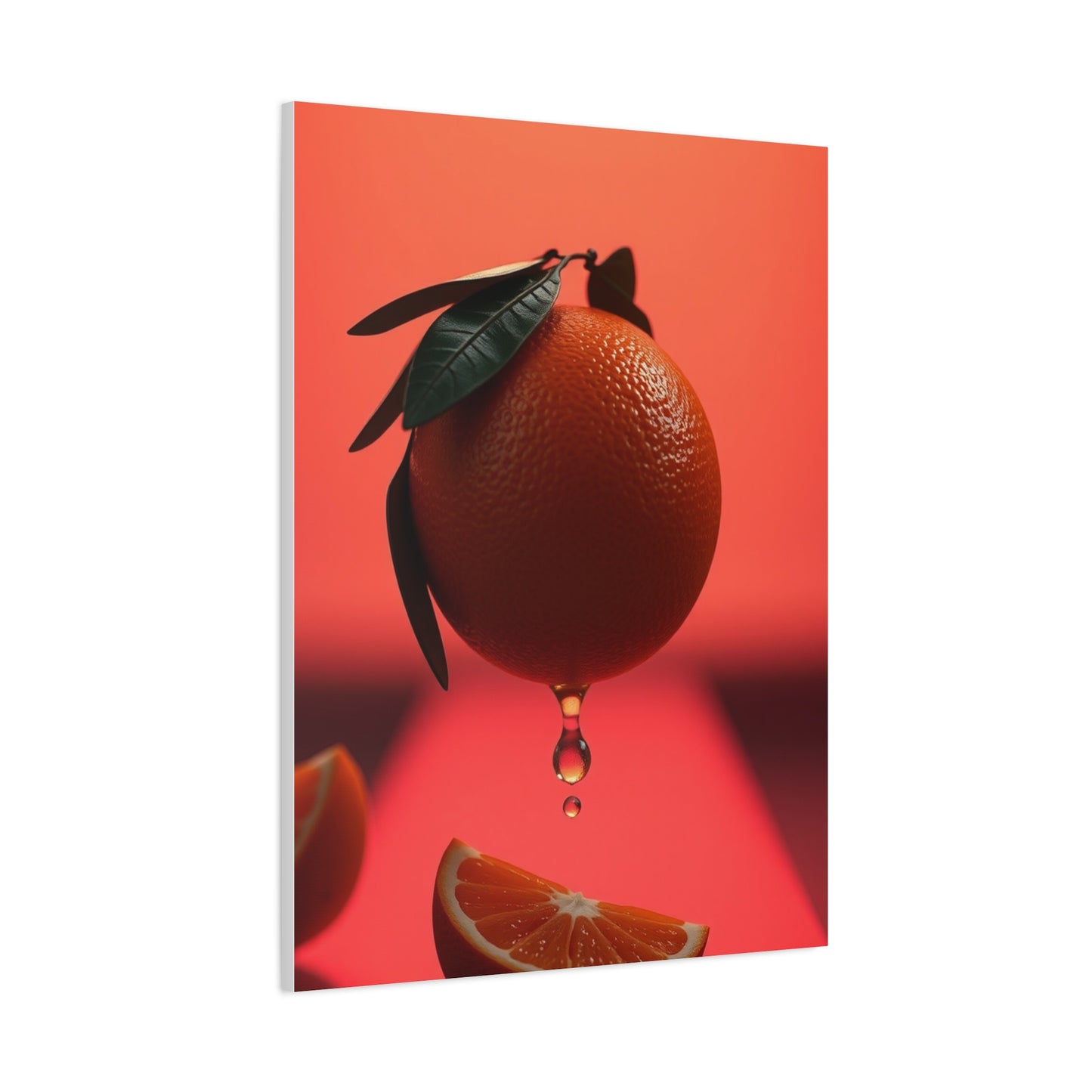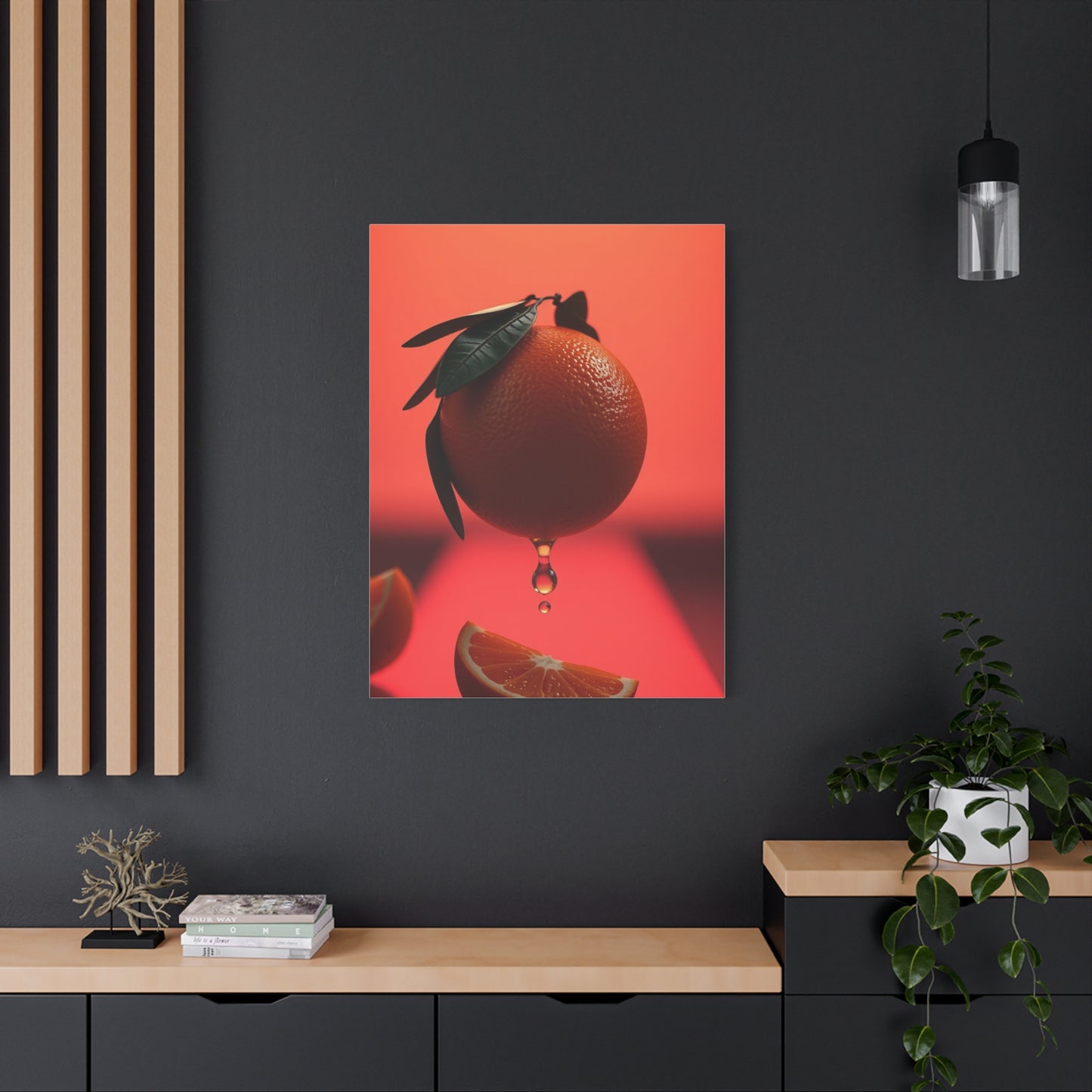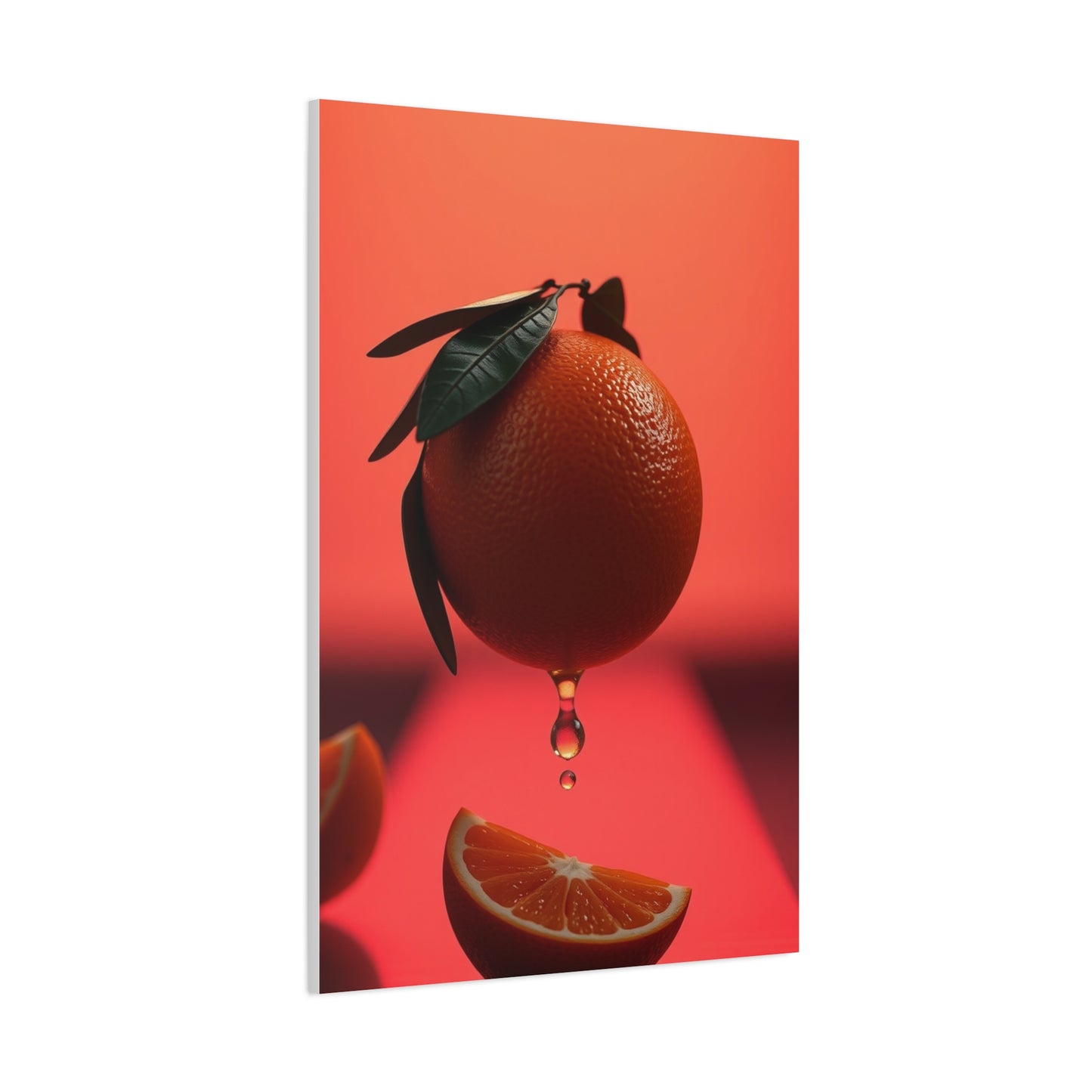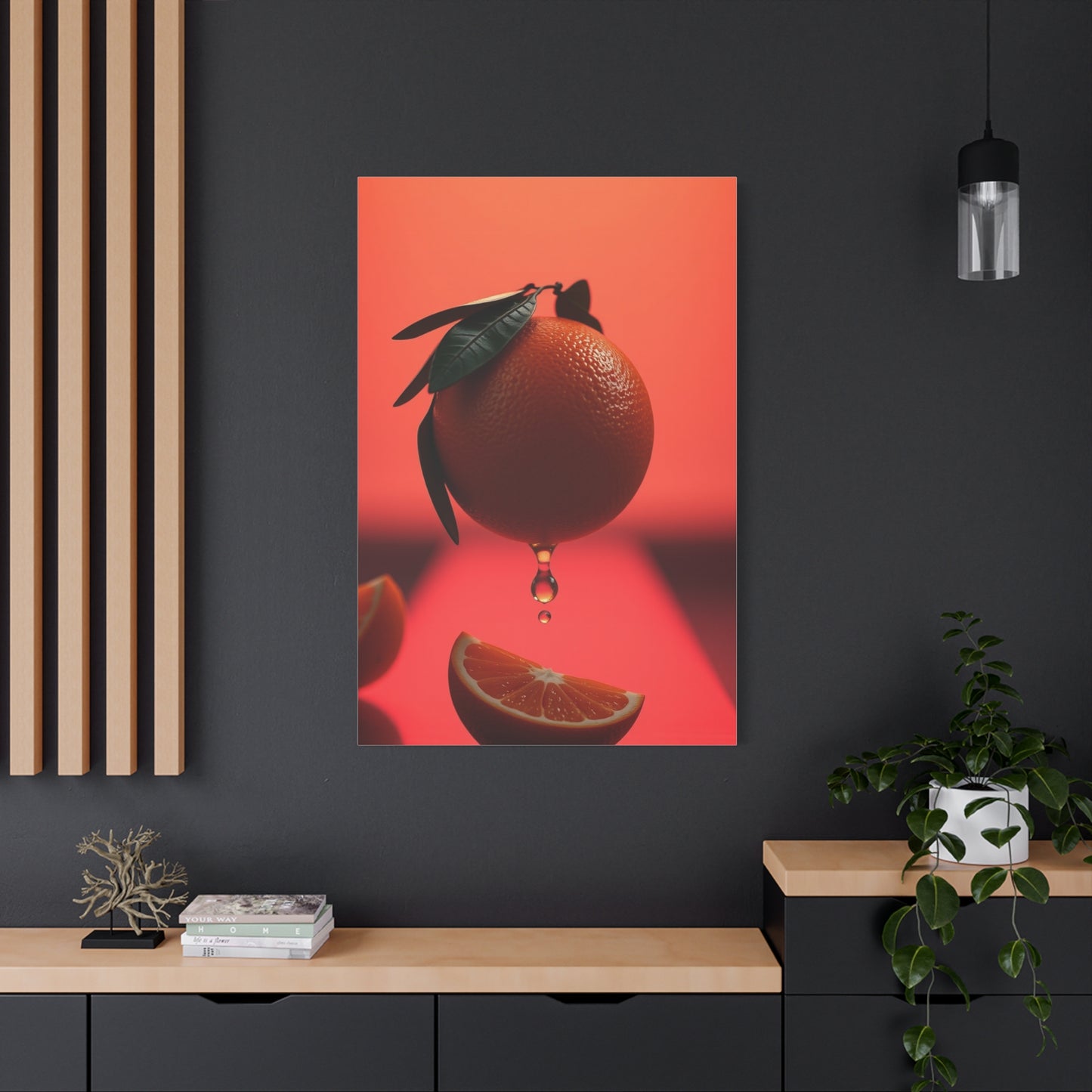Citrus Sophistication: How Clementine Opulence Wall Art Redefines Modern Luxury
The concept of clementine opulence art wall art represents a sophisticated fusion of natural beauty and luxurious aesthetic principles that has captured the imagination of interior designers and art enthusiasts worldwide. This unique artistic approach draws inspiration from the vibrant, sun-kissed tones of clementine fruits while incorporating elements of grandeur and refinement that define opulent design. The movement celebrates the inherent beauty found in nature's simplest offerings, transforming the humble clementine into a symbol of abundance, warmth, and sophisticated taste. When examining the foundational principles behind this artistic genre, we discover a profound appreciation for color theory, textural diversity, and the psychological impact of incorporating organic elements into living spaces. The warm orange hues characteristic of clementines evoke feelings of energy, creativity, and optimism, making them particularly suitable for spaces designed to inspire and invigorate.
Furthermore, the association with opulence elevates these natural elements beyond mere decoration, positioning them as statement pieces that communicate refined taste and cultural awareness. The integration of clementine-themed artwork into residential and commercial environments reflects a broader trend toward biophilic design, which recognizes the human need for connection with nature even within urban settings. This artistic movement challenges conventional notions about fruit-themed decor, transforming what might once have been considered kitsch into genuinely sophisticated visual experiences. By examining the historical context, psychological dimensions, and practical applications of clementine opulence art wall art, we gain insight into why this aesthetic has become increasingly prevalent in contemporary interior design circles and how it continues to evolve in response to changing tastes and environmental consciousness.
Evolution of Citrus Imagery in Fine Art
The representation of citrus fruits in artistic traditions stretches back centuries, with various cultures recognizing the symbolic and aesthetic value of these vibrant specimens. Renaissance masters often incorporated oranges and lemons into their still life compositions as symbols of wealth and exotic luxury, given that citrus fruits were rare and expensive commodities in European markets during that period. The Dutch Golden Age particularly celebrated citrus imagery, with painters meticulously rendering the textured peels and translucent segments of these fruits to demonstrate both technical virtuosity and acknowledge their status as precious imports. The tradition of depicting citrus in art served multiple purposes beyond mere representation. These fruits symbolized various concepts including fertility, prosperity, divine favor, and the fleeting nature of earthly pleasures within the vanitas tradition. As global trade expanded and citrus became more accessible, its representation in art evolved from symbols of extreme wealth to more democratic expressions of natural beauty and domestic comfort.
The Impressionist movement brought new approaches to depicting citrus, with artists like Pierre-Auguste Renoir and Claude Monet capturing the play of light on orange surfaces and the atmospheric qualities surrounding fruit arrangements. Moving into the twentieth century, modernist artists reimagined citrus imagery through increasingly abstract lenses, reducing forms to essential shapes and colors while maintaining the emotional resonance of these familiar objects. Contemporary artists working within the clementine opulence aesthetic draw upon this rich historical tradition while infusing their work with current sensibilities about sustainability, global culture, and the desire for authentic connection with natural forms. The evolution from classical still life to contemporary clementine opulence art wall art demonstrates how certain visual motifs maintain relevance across centuries, continually finding new meaning and application within changing cultural contexts. This historical perspective enriches our understanding of why clementine-themed artwork resonates so powerfully with modern audiences, connecting us to artistic lineages that span continents and centuries.
Emotional Impact of Clementine Tones
The distinctive color palette associated with clementine opulence art wall art exerts profound psychological effects on viewers and inhabitants of decorated spaces. The warm spectrum ranging from golden yellows through burnt oranges to deep amber tones stimulates specific emotional and physiological responses that interior designers and artists deliberately leverage to create desired atmospheric effects. Scientific research in color psychology has demonstrated that orange hues increase feelings of enthusiasm, creativity, and social connection while simultaneously promoting appetite and energetic activity. These characteristics make clementine-inspired color schemes particularly appropriate for dining areas, creative studios, social gathering spaces, and environments where motivation and positive energy are priorities. The warmth inherent in these tones creates psychological sensations of comfort and security, mimicking the effects of natural sunlight and thereby counteracting the potentially depressing effects of prolonged indoor living or limited natural light exposure. Furthermore, the association between clementine colors and natural food sources triggers subconscious connections to nourishment, abundance, and seasonal rhythms that humans have evolved to recognize and respond to positively.
When opulent design elements are combined with these intrinsically appealing color foundations, the result is artwork that satisfies multiple psychological needs simultaneously, providing both aesthetic pleasure and emotional sustenance. The specific shade variations within the clementine spectrum allow for nuanced emotional modulation. Lighter, more golden tones tend toward cheerfulness and optimism, while deeper, more saturated oranges convey intensity, passion, and dramatic flair. Artists working in the clementine opulence style skillfully navigate these variations, often incorporating gradients and tonal shifts that create visual interest while maintaining cohesive emotional narratives. The interplay between warm clementine tones and complementary colors like deep teals, navy blues, or forest greens creates dynamic visual tension that prevents the warmth from becoming overwhelming while adding sophistication and depth to compositions. Understanding these psychological dimensions helps explain why clementine opulence art wall art has become so popular in therapeutic environments, wellness centers, and spaces designed to promote mental health and emotional wellbeing. The colors literally brighten both physical spaces and psychological states, offering a form of visual therapy that requires no conscious effort from occupants.
Materials in Creating Clementine Opulence Artwork
Artists specializing in clementine opulence art wall art employ diverse techniques and materials to capture both the visual essence of their subject and the luxurious qualities that define the opulent aesthetic. Traditional oil painting remains popular for its ability to render the luminous, translucent qualities of citrus flesh and the subtle textural variations of peel surfaces. The slow-drying nature of oil paints allows for extensive blending and layering, enabling artists to build up rich, jewel-like surfaces that embody opulence through material depth as much as subject matter. Acrylic painting offers alternative approaches, with its quick-drying properties facilitating bold, gestural mark-making and the creation of sharp edges and graphic compositions that appeal to contemporary sensibilities. Many artists combine traditional painting with mixed media elements, incorporating gold leaf, metallic pigments, or textured materials that literally add precious substances to their work, reinforcing themes of luxury and value. The application of gold or copper leaf to canvas backgrounds or as highlighting elements creates surfaces that catch and reflect light in ever-changing ways, adding dimension and visual interest that pure pigment cannot achieve.
Three-dimensional relief techniques, whether achieved through heavy impasto application or the attachment of actual materials like dried citrus peels, fabric, or found objects, transform flat paintings into sculptural artworks that engage viewers through multiple sensory channels. Digital art and mixed media printing have opened new possibilities for clementine opulence creation, allowing artists to manipulate photographs of actual clementines, combine multiple images, and enhance colors to achieve effects impossible through traditional means alone. High-quality giclée printing on canvas or specialized art papers enables reproduction of these digital works while maintaining gallery-quality presentation standards. Some contemporary artists embrace maximalist approaches, creating elaborate compositions that incorporate pattern, ornamental elements, and complex layering that overwhelm the senses in intentionally opulent ways. Others pursue minimalist interpretations, reducing clementine forms to essential shapes and limited color palettes while using premium materials and expert craftsmanship to convey luxury through restraint and refinement. The choice of framing and presentation significantly impacts the overall opulence of finished pieces, with many artists collaborating with framemakers to create custom surrounds that complement and enhance the central artwork. Ornate gilded frames reinforce classical opulence, while sleek metallic or richly stained wooden frames offer modern sophistication.
Incorporating Clementine Opulence Art into Various Interior Design Styles
The versatility of clementine opulence art wall art allows for successful integration across remarkably diverse interior design aesthetics, from traditional to contemporary and everything between. In classical or traditional interiors characterized by rich woods, damask fabrics, and antique furnishings, clementine artwork provides vibrant focal points that enliven potentially heavy decorative schemes without disrupting their fundamental character. The historical precedent of fruit imagery in classical still life painting creates natural resonance between these artworks and traditional design vocabularies. When selecting pieces for traditional spaces, consider compositions with more realistic rendering, potentially incorporating classical elements like draped fabrics, ornate vessels, or architectural fragments alongside the citrus subjects. The warm tones complement the typical color palettes found in traditional interiors, which often feature burgundies, golds, forest greens, and rich browns. For contemporary or modern interiors defined by clean lines, minimal ornamentation, and edited color schemes, clementine opulence art offers opportunities to inject warmth and organic elements without compromising the sleek aesthetic.
Abstract or stylized interpretations work particularly well in these contexts, with simplified forms, bold color blocking, or geometric arrangements of clementine imagery creating visual interest while maintaining contemporary sensibilities. Large-scale pieces make powerful statements in modern open-plan living spaces, anchoring seating areas or defining dining zones within flowing layouts. In transitional interiors that blend traditional and contemporary elements, clementine artwork serves as bridge elements that reference historical precedents while exhibiting modern execution and styling. These spaces benefit from artwork that balances realistic and abstract qualities, combines classical composition with contemporary color intensity, or juxtaposes traditional subjects with unexpected materials or presentation formats. Bohemian or eclectic interiors naturally accommodate clementine opulence art, as these styles thrive on visual abundance, pattern mixing, and the combination of diverse cultural references.
In boho spaces, artwork can be layered with textiles, plants, and collections of objects, creating rich visual tapestries where clementine pieces contribute to overall warmth and visual generosity. Scandinavian or minimalist interiors, with their emphasis on restraint, natural materials, and abundant light, benefit from carefully selected clementine artwork that adds controlled warmth without overwhelming the deliberately spare aesthetic. In these contexts, single powerful pieces or small groupings work better than gallery walls, and compositions with significant negative space complement the uncluttered environment. Mediterranean or Spanish Colonial styles, which already incorporate warm color palettes, terracotta elements, and references to agricultural abundance, form natural partnerships with clementine-themed artwork. These pieces reinforce the sensory richness and connection to land and harvest central to these design traditions.
The Symbolic Meanings and Cultural Significance of Clementines
Beyond their visual appeal, clementines carry rich symbolic meanings and cultural associations that add layers of significance to artwork featuring these fruits. Understanding these deeper resonances enhances both the creation and appreciation of clementine opulence art wall art. In many Asian cultures, particularly Chinese tradition, citrus fruits represent good fortune, prosperity, and successful harvests. The golden-orange color associates with wealth and imperial power, while the abundance of segments within each fruit symbolizes unity and completeness. Presenting citrus fruits during Lunar New Year celebrations represents wishes for prosperity in the coming year, making clementine imagery particularly auspicious for those familiar with these traditions. The round shape of clementines connects to concepts of wholeness, cycles, and eternal return found across numerous philosophical and spiritual traditions.
This geometry suggests completion, perfection, and the cyclical nature of seasons and life itself. In Mediterranean cultures where citrus cultivation has ancient roots, these fruits represent the region's agricultural heritage, the sweetness of life, and the rewards of patient cultivation. The relatively recent development of clementine varieties through human agricultural innovation makes them symbols of human creativity and our ability to improve upon nature through careful stewardship rather than exploitation. Unlike some older citrus varieties with bitter or sour components, clementines are characterized by their sweetness and easy-peeling nature, potentially symbolizing accessibility, generosity, and the removal of barriers. The seedless quality of many clementine varieties has interesting symbolic dimensions, representing both human technological achievement and raising questions about fertility, natural reproduction, and our relationship with modified plants. In contrast to thorny citrus trees, clementines are relatively gentle to harvest, suggesting abundance without painful sacrifice.
The winter ripening season of clementines gives them special significance as sources of color, flavor, and nutritional wealth during darker, colder months. This seasonal dimension makes clementine imagery particularly meaningful as a reminder of nature's provision and the existence of brightness even during challenging periods. In artistic contexts, choosing clementines over other citrus varieties signals specific aesthetic and symbolic intentions. They are smaller and more intimate than grapefruits, sweeter and more approachable than lemons, and more refined than common oranges. This specificity contributes to the overall sense of connoisseurship and careful curation that defines opulent aesthetic choices. Artists who specialize in clementine opulence work often consciously engage with these symbolic dimensions, creating pieces that function simultaneously as beautiful objects and carriers of meaning that resonates with culturally aware audiences.
Large-Scale Clementine Murals and Statement Pieces
The creation and installation of large-scale clementine opulence art wall art represents a particularly impactful approach to incorporating this aesthetic into residential and commercial environments. Oversized artwork commands attention, establishes immediate visual hierarchy, and transforms ordinary rooms into gallery-like experiences that elevate everyday living. When commissioning or selecting large-scale clementine pieces, several considerations ensure successful results that enhance rather than overwhelm spaces. The relationship between artwork dimensions and wall size requires careful calibration. General design principles suggest that artwork should occupy approximately two-thirds to three-quarters of available wall space for optimal visual impact, though this guideline flexes depending on ceiling height, furniture placement, and overall design intentions. In spaces with soaring ceilings, dramatically tall pieces draw the eye upward and make full use of vertical dimensions while preventing rooms from feeling cavernous or poorly proportioned.
Horizontal pieces work well above sofas, beds, or console tables, creating visual relationships between furniture and art that unify the design. The style and complexity of large-scale clementine artwork significantly impacts how spaces feel. Highly detailed, realistic renderings reward close examination and extended viewing, revealing new elements and subtleties over time. More abstract or simplified large pieces create bold graphic impacts that register immediately but may offer less long-term visual interest. Balancing these considerations involves understanding how spaces will be used and how much time occupants will spend truly looking at versus simply being in the presence of the artwork. Color intensity and saturation become particularly important in large formats. While smaller pieces can successfully employ intensely saturated clementine oranges and golds, large-scale works in highly saturated colors may feel overwhelming, particularly in smaller rooms or spaces with limited natural light. Many successful large-scale pieces use variations in value and saturation, creating visual breathing room within compositions through areas of less intense color or neutral passages.
Installation considerations for large-scale works include weight management, appropriate hanging hardware, and sometimes professional installation to ensure both safety and proper positioning. Some large pieces arrive in multiple panels designed to hang with minimal spacing between them, creating the visual impact of a single massive artwork while simplifying transport and installation. Lighting design becomes crucial for large statement pieces. Properly illuminated artwork reveals colors, textures, and details while creating atmospheric effects in surrounding spaces. Track lighting, picture lights, or strategically placed spotlights can transform how clementine artwork appears throughout different times of day. Some installations incorporate dramatic uplighting or backlighting effects that turn artwork into luminous focal points after dark. For commercial applications like restaurants, hotels, or corporate lobbies, large-scale clementine opulence art creates memorable visual experiences that contribute to brand identity and customer experience.
Gallery Wall Compositions Featuring Clementine Themes
Creating gallery walls centered around clementine opulence art wall art offers opportunities for dynamic, personalized displays that showcase collections while creating significant visual impact. Unlike single large pieces, gallery walls allow for mixing sizes, styles, and even media, building complex visual narratives through careful curation and arrangement. Successful gallery walls balance unity and variety, creating cohesion through repeated elements while maintaining enough diversity to sustain visual interest. When developing clementine-themed gallery walls, several approaches yield compelling results. Monochromatic schemes featuring variations on clementine imagery in consistent color palettes create sophisticated, harmonious displays. Different artists' interpretations of similar subjects demonstrate the range of perspectives possible within focused themes. Alternatively, arranging pieces that follow clementines through various stages from blossom to fruit to cross-section creates narrative progressions that engage viewers intellectually as well as aesthetically.
Mixing photographic, painted, and graphic interpretations of clementines adds textural and stylistic variety while maintaining thematic consistency. The physical arrangement of pieces within gallery walls follows certain principles while allowing creative flexibility. Symmetrical arrangements create formal, balanced impressions suitable for traditional interiors or spaces where calm orderliness is desired. Asymmetrical arrangements feel more dynamic and contemporary, suggesting organic growth rather than imposed order. Many successful gallery walls establish central focus pieces, typically larger or more visually complex works, with smaller satellite pieces arranged around them. This creates clear visual hierarchy while allowing supporting pieces to enhance rather than compete with focal works. Spacing between pieces significantly impacts overall effects. Tight spacing with minimal gaps creates dense, energetic walls that read as unified compositions. More generous spacing allows individual pieces greater autonomy while creating more relaxed, breathable displays. Gallery walls benefit from consistent spacing between all pieces, typically ranging from one to three inches depending on overall scale and available wall area.
Frame selection unifies diverse pieces, with matching frames creating strong cohesion even among stylistically varied artworks. Alternatively, frames in different styles but consistent colors or finishes add visual interest while maintaining enough similarity to hold compositions together. Some gallery walls abandon frames entirely, using frameless canvas pieces or floating mounts for contemporary, streamlined appearances. Before committing to permanent installation, arrange pieces on the floor in planned configurations, making adjustments until achieving satisfying balance and flow. Creating paper templates matching each piece's dimensions and taping them to walls allows visualization of arrangements before making nail holes. Digital planning tools and applications enable virtual arrangement experimentation, though physical mockups often provide better spatial understanding. Gallery walls work beautifully along staircases, transforming transitional spaces into gallery experiences. The vertical progression accommodates numerous pieces while the changing viewing angles as viewers move up or down stairs creates dynamic, evolving experiences of the collection.
Clementine Opulence in Minimalist and Contemporary Spaces
The integration of clementine opulence art wall art into minimalist and contemporary interiors requires thoughtful approaches that respect the fundamental principles of these design aesthetics while introducing the warmth and organic elements that citrus imagery provides. Minimalism prioritizes intentionality, with every element serving clear purposes and contributing to overall harmony rather than visual noise. Within this framework, clementine artwork succeeds when it embodies qualities of restraint, refinement, and essential beauty rather than decorative excess. Contemporary minimalist clementine art often features simplified forms reducing fruits to basic geometric shapes, exploring the relationship between circle and sphere, positive and negative space. These reductive approaches honor minimalist principles while the vibrant clementine colors prevent austerity from becoming coldness. Single, perfectly composed clementines centered on neutral backgrounds create meditative focal points that invite contemplation rather than merely decoration. The quality of execution becomes paramount in minimalist contexts where fewer elements mean each receives greater scrutiny. Impeccable craftsmanship, premium materials, and sophisticated color handling distinguish genuinely refined pieces from merely simple ones.
The opulence in minimalist clementine art resides in material quality and artistic mastery rather than visual complexity or ornamental abundance. Contemporary interpretations might abstract clementine forms almost to the point of pure color-field painting, with the fruit's presence suggested rather than explicitly depicted. These works appeal to viewers who appreciate conceptual sophistication and enjoy artwork that requires engagement and interpretation. The psychological warmth and energy associated with clementine colors serves important functions in minimalist environments that might otherwise feel emotionally cold despite their visual appeal. The organic curves of citrus forms provide natural counterpoints to the straight lines and angular geometries typical in minimalist architecture and furniture, creating visual dialogue between human-made and natural elements. Scale considerations differ in minimalist contexts. While maximalist spaces might accommodate numerous smaller pieces, minimalist design often features fewer but larger artworks, giving each piece room to breathe and commanding attention through confident presence rather than accumulated quantity.
A single powerful clementine piece becomes a considered statement rather than merely decoration. Placement in minimalist spaces follows similar intentional principles. Rather than filling walls, artwork occupies specific zones, often with generous surrounding negative space that frames and emphasizes the piece itself. This approach treats artwork as three-dimensional objects inhabiting space rather than two-dimensional images applied to surfaces. Contemporary minimalist spaces often feature flexible, evolving arrangements rather than permanent installations. Clementine artwork might be displayed on easels, leaned against walls, or positioned on minimal shelving, allowing periodic rotation that keeps environments dynamic without accumulating visual clutter. The specific shade selection within the clementine spectrum impacts compatibility with minimalist aesthetics. Softer, more muted interpretations of clementine colors integrate more easily than intensely saturated versions, though dramatic color can succeed as intentional accent within otherwise neutral palettes.
Seasonal Styling with Clementine Art Throughout the Year
While clementines reach peak availability during winter months, clementine opulence art wall art offers year-round visual appeal that can be enhanced through seasonal styling approaches that keep interiors feeling fresh and responsive to changing seasons. Understanding how to contextualize citrus artwork within different seasonal narratives maximizes both its versatility and impact throughout the year. During autumn months, clementine art naturally complements the season's characteristic warmth, with its orange and golden tones echoing falling leaves, harvest abundance, and the gradual shift toward cozier interior living. Pairing clementine artwork with seasonal textiles in rust, burgundy, and chocolate brown creates layered warmth that welcomes cooler weather. Adding natural elements like branches, wheat stalks, or pinecones near artwork creates vignettes that honor the season's agricultural themes. As autumn progresses toward winter, clementine art takes on associations with holiday traditions in many cultures. The fruits' winter ripening season and their role in holiday gifting and decoration makes clementine imagery feel particularly appropriate from late November through early January.
Subtle incorporation of evergreen branches, candles, or metallic accents near clementine artwork creates festive atmospheres without overwhelming the art itself. The inherent cheerfulness of clementine colors provides welcome contrast against winter's shorter days and potentially dreary weather. During spring months, clementine artwork shifts symbolic register, connecting to themes of renewal, energy, and optimism that characterize the season. The warm citrus tones harmonize with spring's fresh greens, soft pinks, and clear blues. Surrounding clementine art with fresh flowers, especially in complementary colors like purple, pink, or white, creates vibrant combinations that celebrate seasonal rebirth. The round forms of clementines echo the shapes of spring blossoms, creating subtle visual relationships. Lighter, more golden interpretations of clementine colors feel especially appropriate during spring, reflecting increasing daylight and rising temperatures. Summer styling approaches emphasize clementine art's connection to vitamin-rich refreshment and sunny warmth. Pairing citrus artwork with beach-gathered shells, coral branches, or turquoise accessories creates coastal combinations that feel vacation-inspired and relaxed.
The inherent association between citrus and refreshing beverages makes clementine art particularly suitable for outdoor living spaces, covered patios, or indoor areas designed for casual summer entertaining. Styling with lightweight linens, whitewashed woods, and abundant plants creates breezy contexts where clementine art provides controlled warmth without heaviness. The versatility of clementine artwork for year-round display distinguishes it from more explicitly seasonal imagery that requires storage during off-seasons. By adjusting surrounding décor, textiles, and accessories rather than the core artwork, spaces evolve seasonally while maintaining visual continuity through permanent art installations. This approach proves both economical and environmentally conscious, avoiding the accumulation of multiple seasonal art collections. For those who enjoy more dramatic seasonal changes, rotating between different clementine artworks throughout the year maintains thematic consistency while varying specific interpretations. Abstract pieces might rotate with realistic ones, minimalist compositions alternate with lush still life arrangements, or different color interpretations emphasize various aspects of the clementine spectrum.
Pairing Clementine Art with Complementary Design Elements
The successful integration of clementine opulence art wall art depends significantly on thoughtful selection and arrangement of complementary design elements that enhance rather than compete with the artwork. Understanding color theory, textural relationships, and stylistic harmony enables creation of cohesive environments where all elements work synergistically. The warm orange and golden tones central to clementine imagery interact predictably with colors elsewhere in spaces, creating opportunities for harmonious or dynamically contrasting schemes. Analogous color schemes incorporating yellows, reds, and golden browns create warm, energetic environments where clementine art feels naturally integrated. These combinations work particularly well in social spaces, dining areas, and creative studios where vitality and warmth are priorities. Incorporating varying saturations and values within these color families prevents monotony while maintaining overall warmth. Complementary color strategies pair clementine oranges with blues, teals, and turquoises, creating vibrant contrasts that make both colors appear more intense.
These high-energy combinations suit contemporary interiors and spaces where dramatic visual impact is desired. Navy blue provides particularly sophisticated contrast with clementine tones, creating schemes that feel both bold and refined. The deep blue grounds the brightness of citrus colors, preventing them from overwhelming while adding depth and seriousness that balances orange's inherent cheerfulness. Neutral backgrounds in whites, creams, grays, or beiges allow clementine artwork maximum impact by providing unobtrusive contexts that frame rather than compete. Warm neutrals like cream, beige, and greige harmonize naturally with clementine tones, creating cohesive warmth throughout spaces. Cooler neutrals like gray and white create more dramatic contrast, making clementine art pop as vivid focal points against understated backgrounds. Textile selections significantly impact how clementine art integrates into overall designs. Natural fibers like linen, cotton, and wool add textural interest while their organic qualities complement the natural subject matter of fruit imagery. Luxurious textiles including velvet, silk, and fine wool reinforce opulent themes, particularly in deeper complementary tones like emerald, sapphire, or burgundy.
Pattern mixing allows for additional visual interest, though patterns should be selected carefully to enhance rather than overwhelm clementine art. Small-scale patterns in compatible colors create subtle visual texture, while large-scale botanical or abstract patterns can echo themes from artwork if carefully coordinated. Furniture selection and arrangement affect how artwork is experienced. Low-profile furniture prevents physical obstruction of wall art while appropriate spacing allows viewers to appreciate pieces from optimal distances. Furniture in natural woods brings additional organic warmth that harmonizes with fruit imagery, while painted pieces in complementary or neutral colors can either echo or contrast with artwork colors based on desired effects. Metallic accents in gold, brass, or copper reinforce opulent themes while their warm tones naturally complement clementine colors. These might appear in light fixtures, hardware, decorative objects, or furniture details. Silver and chrome provide cooler contrast suitable for more contemporary interpretations. Decorative accessories should be selected judiciously to avoid cluttering displays around artwork. A few carefully chosen objects in materials like ceramic, glass, or natural stone add interest without competition.
Lighting Strategies to Enhance Clementine Opulence Artwork
Proper lighting transforms clementine opulence art wall art from merely visible decoration to dramatically impactful focal points that anchor and enliven interiors. Understanding both technical and aesthetic dimensions of art lighting enables creation of optimal viewing conditions that honor artists' intentions while enhancing overall environmental atmospherics. The fundamental purpose of art lighting involves providing sufficient illumination to accurately perceive colors, details, and textures without causing glare, reflections, or damage to artwork. The specific lighting needs vary based on artwork characteristics, room functions, and available natural light. Pieces with rich, dark backgrounds or subtle tonal variations require more focused, powerful lighting than high-contrast works or pieces with lighter backgrounds. The warm color palette typical of clementine artwork generally benefits from warm-toned lighting around 2700-3000K color temperature, which enhances rather than fights the inherent warmth. Cooler lighting above 4000K can create interesting contemporary effects but may render warm oranges and golds less vibrant and appealing.
Adjustable or tunable LED systems offer flexibility to optimize color temperature based on time of day and ambient conditions. Directional spotlighting represents the most common and effective approach for illuminating individual artworks. Track lighting systems with adjustable heads allow precise aiming and easy repositioning as artwork changes. When installing track lights, position them approximately 30-45 degrees from the wall and distance them so light beams fully cover artwork without spilling significantly onto surrounding walls. This focused approach creates dramatic emphasis while preventing light pollution that diminishes impact. Picture lights mounted directly above or below frames provide elegant, traditional lighting solutions particularly suitable for formal interiors and classical artwork presentations. Modern LED picture lights have become increasingly efficient and sophisticated, offering excellent color rendering and minimal heat production.
For clementine opulence pieces in ornate frames, brass or gold-finished picture lights reinforce themes of luxury while providing functional illumination. Wall washing techniques using linear fixtures or multiple spotlights create even illumination across entire walls, suitable for gallery-style displays or spaces where multiple pieces hang in proximity. This approach works well for gallery walls of clementine-themed works, ensuring even illumination without creating competing pools of light and shadow. Ambient room lighting significantly affects how artwork appears. During daytime, natural light should be considered carefully, as direct sunlight causes glare and long-term damage to pigments and substrates. Position valuable artwork away from direct sun exposure or install UV-filtering window treatments that protect art while admitting light. In rooms with abundant natural light, supplementary art lighting may be unnecessary during daytime but becomes essential for evening viewing.
Layered lighting approaches combining ambient overhead lighting, task lighting, and focused art lighting create flexible, functional environments where artwork remains visible and impactful under various conditions. Dimmer controls allow adjustment of art lighting intensity based on mood, time of day, and activities, preventing artwork from appearing too bright during intimate evening hours or insufficiently illuminated during daytime when competing with natural light. The color rendering index measures how accurately light sources render colors compared to natural sunlight. For art display, CRI values above 90 are recommended, with values above 95 considered excellent. High CRI LEDs ensure that the subtle color variations and relationships within clementine artwork appear as artists intended.
Creating Cohesive Collections of Clementine-Themed Artwork
Building thoughtful collections of clementine opulence art wall art allows enthusiasts to explore the theme's full range while creating personally meaningful assemblages that evolve over time. Unlike one-off purchases, collections develop narratives, showcase connoisseurship, and transform ordinary interiors into curated environments reflecting collectors' aesthetic sensibilities and cultural engagement. Approaching clementine art collecting with intentionality rather than accumulating haphazardly ensures cohesive results that justify the space and resources invested. Defining collection parameters provides direction while maintaining flexibility for serendipitous discoveries. Some collectors focus on specific artistic media, perhaps exclusively collecting oil paintings or limiting acquisitions to works on paper. Others might specialize in particular artistic styles, collecting only photorealistic depictions or conversely pursuing purely abstract interpretations. Geographic focus offers another collection organizing principle, seeking works by artists from specific regions, perhaps Mediterranean areas with strong citrus-growing traditions or contemporary urban centers known for particular artistic movements.
Chronological collecting tracks the evolution of clementine imagery across time periods, from classical still life through modernist abstraction to contemporary digital works. Thematic variations within the broader clementine subject provide rich collection possibilities. Some collectors might focus on whole fruits while others pursue cross-sections, blossoms, trees, or harvest scenes. Collections exploring the life cycle from flower through fruit to consumption create natural narrative progressions. Color-focused collections might seek variations spanning the full spectrum from pale yellow through deep burnt orange, exploring how different artists interpret and represent citrus tones. Artist-focused collecting develops relationships with particular creators whose vision resonates personally. Following individual artists over time documents their evolution while building rapport and potentially accessing new works before public release.
Some collectors balance breadth and depth, maintaining core collections by favored artists while opportunistically adding works by new discoveries. Scale considerations affect collection development. While some collectors pursue numerous smaller works that can be rotated and reconfigured, others invest in fewer, larger statement pieces. Mixed-scale collections offer maximum flexibility, allowing both gallery wall arrangements and standalone presentations. The physical characteristics of storage and display spaces naturally limit and shape collections. Authentication, provenance, and documentation become increasingly important as collections grow and financial investment accumulates. Maintaining records including purchase information, certificates of authenticity, artist statements, exhibition history, and condition reports protects value while preserving historical information. Professional appraisals serve both insurance purposes and intellectual interest, deepening understanding of individual works and collection context within broader art markets.
Conservation concerns require attention, particularly for works on paper or pieces using fugitive pigments susceptible to light damage. Proper framing using acid-free materials, UV-protective glazing, and appropriate mounting techniques preserves artwork for future generations. Environmental controls managing humidity, temperature fluctuations, and air quality protect valuable collections from deterioration. Insurance coverage appropriate to collection value provides financial protection while sometimes requiring professional security measures for high-value assemblages. Collecting communities offer opportunities for connection, learning, and potential acquisition. Online forums, social media groups, gallery openings, and art fairs provide venues for meeting fellow enthusiasts, discovering artists, and developing expertise. Some collectors eventually transition toward patronage relationships with living artists, commissioning custom works that perfectly suit their spaces and vision.
The Role of Clementine Art in Wellness and Therapeutic Spaces
The incorporation of clementine opulence art wall art into healthcare facilities, therapeutic practices, and wellness-focused environments reflects growing recognition of visual art's significant impacts on psychological and physical wellbeing. The specific color, form, and symbolic characteristics of clementine imagery make it particularly suitable for spaces designed to support healing, reduce stress, and promote positive mental states. Understanding these therapeutic dimensions helps healthcare administrators, therapists, and wellness practitioners make informed decisions about environmental design that supports their core missions. The warm, energetic color palette characteristic of clementine art exerts measurable psychological and physiological effects. Research in environmental psychology and color therapy demonstrates that exposure to orange and warm yellow tones typically increases feelings of optimism, energy, and social connection while reducing symptoms of depression and anxiety.
These effects make clementine artwork particularly appropriate for mental health facilities, counseling offices, and spaces serving individuals dealing with mood disorders or isolation. The colors literally brighten both physical environments and psychological states, providing passive therapeutic benefits simply through presence in the visual field. The organic, natural subject matter connects to biophilic design principles, which recognize humans' innate need for connection with natural elements and living systems. Even when living or receiving treatment in urban settings far from agricultural landscapes, viewing images of fruits, plants, and other natural elements satisfies deep psychological needs and reduces stress responses. Studies have documented that viewing nature imagery, even in pictorial form, lowers blood pressure, reduces stress hormone levels, and accelerates recovery from medical procedures.
The specific choice of clementines rather than more neutral nature imagery adds the additional benefits of their vibrant, life-affirming colors and positive symbolic associations with nourishment and abundance. In pediatric healthcare settings, clementine art provides cheerful visual interest without infantilizing young patients with overtly childish imagery. The bright colors and friendly shapes appeal to children while the sophisticated artistic treatment respects their intelligence and emotional complexity. The fruit subject matter creates opportunities for educational engagement, with healthcare providers using artwork as springboards for discussions about nutrition, growth, and taking care of one's body. For aging populations in senior living facilities or memory care units, familiar imagery like citrus fruits can trigger positive memories and provide conversation starters that facilitate social connection.
Conclusion:
Citrus Sophistication: How Clementine Opulence Wall Art Redefines Modern Luxury showcases the subtle yet transformative power of color, form, and thematic elegance in modern interior design. Clementine Opulence wall art, with its vibrant orange hues, radiant textures, and sophisticated compositions, brings warmth, energy, and refined personality to living spaces. Unlike traditional decorative pieces that simply fill space, this type of artwork actively elevates an interior, introducing layers of visual interest, emotional resonance, and thematic cohesion. By integrating citrus-inspired artistry, homeowners and designers can achieve a balance of luxury and vibrancy that feels deliberate, personal, and timeless.
At the heart of Clementine Opulence art lies its ability to transform ordinary interiors into experiences of sensory richness. The bold, citrus-infused color palette immediately energizes a room, drawing attention while maintaining elegance. Its interplay with complementary tones—soft neutrals, deep charcoals, muted golds—creates harmony and depth, enhancing the sophistication of both contemporary and classic interiors. Texture and dimensionality, often achieved through layered brushwork, metallic accents, or high-gloss finishes, further amplify its visual impact, giving the canvas a tactile quality that invites close inspection and prolonged engagement.
From a design perspective, Clementine Opulence wall art provides versatility in placement and effect. Large-scale canvases serve as statement pieces in living rooms, dining areas, or luxury offices, commanding attention and establishing a room’s thematic focus. Smaller panels or multi-piece arrangements allow for dynamic layering, adding rhythm and cohesion to walls while harmonizing with surrounding décor elements. Its bold yet refined color scheme works seamlessly in modern, minimalist interiors, while also enhancing eclectic, bohemian, or transitional spaces. By integrating Clementine Opulence art thoughtfully, homeowners create visual anchors that unify their color palette, accentuate textures, and elevate the overall design narrative.
Lighting is critical in highlighting the vibrancy and sophistication of citrus-inspired wall art. Natural light enhances the luminosity of orange and gold hues, while strategically positioned accent lighting—spotlights, wall-mounted fixtures, or soft ambient lamps—draws attention to the canvas’s depth, texture, and dimensionality. The interplay of light and surface creates subtle shifts in tone and shadow, adding movement and energy to the piece. In this way, the artwork does not merely occupy space—it transforms with its environment, interacting dynamically with both natural and artificial illumination.
Emotionally, Clementine Opulence wall art conveys warmth, energy, and refined confidence. Citrus hues evoke optimism, vitality, and creativity, infusing spaces with uplifting energy while maintaining an air of sophistication. In a modern luxury context, these artworks serve as more than decorative accents; they become symbols of taste, refinement, and intentionality. Their presence communicates both personality and style, reflecting a homeowner’s commitment to aesthetics, originality, and elevated living. The emotional resonance of such art ensures that rooms feel vibrant yet composed, stimulating yet serene—a balance essential to luxurious interiors.
Artists employ diverse techniques to maximize the impact of Clementine Opulence. Watercolor washes, acrylic layering, metallic foils, and textured mixed-media approaches create depth, luminosity, and a sense of movement. Some compositions emphasize abstraction, focusing on color flow and form, while others blend representational motifs with geometric or floral elements. This versatility allows homeowners to select pieces that align with their personal taste, spatial requirements, and desired emotional impact, ensuring that the artwork feels both meaningful and harmonious within the overall design.
Ultimately, Citrus Sophistication: How Clementine Opulence Wall Art Redefines Modern Luxury exemplifies the ability of carefully curated color, form, and texture to elevate interiors. By integrating these artworks thoughtfully, homeowners create environments that are visually arresting, emotionally engaging, and aesthetically coherent. Clementine Opulence wall art transforms interiors from ordinary to extraordinary, embodying the principles of modern luxury: elegance, energy, and intentional beauty.
In essence, citrus-inspired wall art is more than a decorative choice; it is a vehicle for visual storytelling and emotional enrichment. Its combination of vibrant hues, sophisticated textures, and dynamic composition allows spaces to feel both luxurious and approachable, lively yet composed. Through Clementine Opulence, modern interiors are infused with energy, personality, and refined style—turning walls into canvases of sophistication, creativity, and enduring visual delight.

















